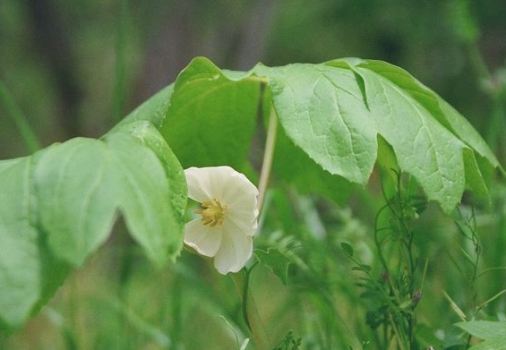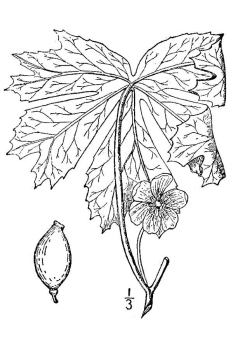Podophyllum peltatum
 |
 |
Photo Courtesy Renee Brecht |
Britton & Brown |
| Botanical name: | Podophyllum peltatum |
| Common name: | mayapple |
| Group: | dicot |
| Family: | Berberidaceae |
| Growth type: | forb/herb |
| Duration: | perennial |
| Origin: | native |
| Plant height: | 12-18" |
| Foliage: | up to 1' across; palmately lobed, cleft, denatate on margins. 5-9 lobes per leaf that are deeply divided; leaves are glabrous. Rhizotamous. |
| Flower: | white; fruit is an ovoid fleshy yellow berry, occuring only when cross-pollination occurs, 2" across |
| Flowering time: | April - mid-May; fruits mature August, usually after the foliage has perished. |
| Habitat: | well-drained, rich, moist, shadedground of deciduous woods and edges |
| Range in New Jersey: | statewide outside the central Pine Barrens |
| Heritage ranking, if any: | n/a |
| Distribution: |  |
| Misc. | Some plants are branched with a pair of leaves, "forks"; others are
unbranched and produce only a single leaf on a long stalk, rather
resembling an umbrella. When ripe, the fruit is edible; the rest of the plant is highly toxic (podophyllum). This toxin is used in treating skin cancer by inhibiting cell growth. Berries are eaten by box turtles and possibly by opossums, raccoons, and skunks, as well as squirrels, white-footed mice and common grackles. Box turtles are known to be a dispersal agent for the seeds by consuming the fruit and dispersing the seeds after digestion. Native Americans used the plant for liver ailments, rheumatism, and as an insecticide. |